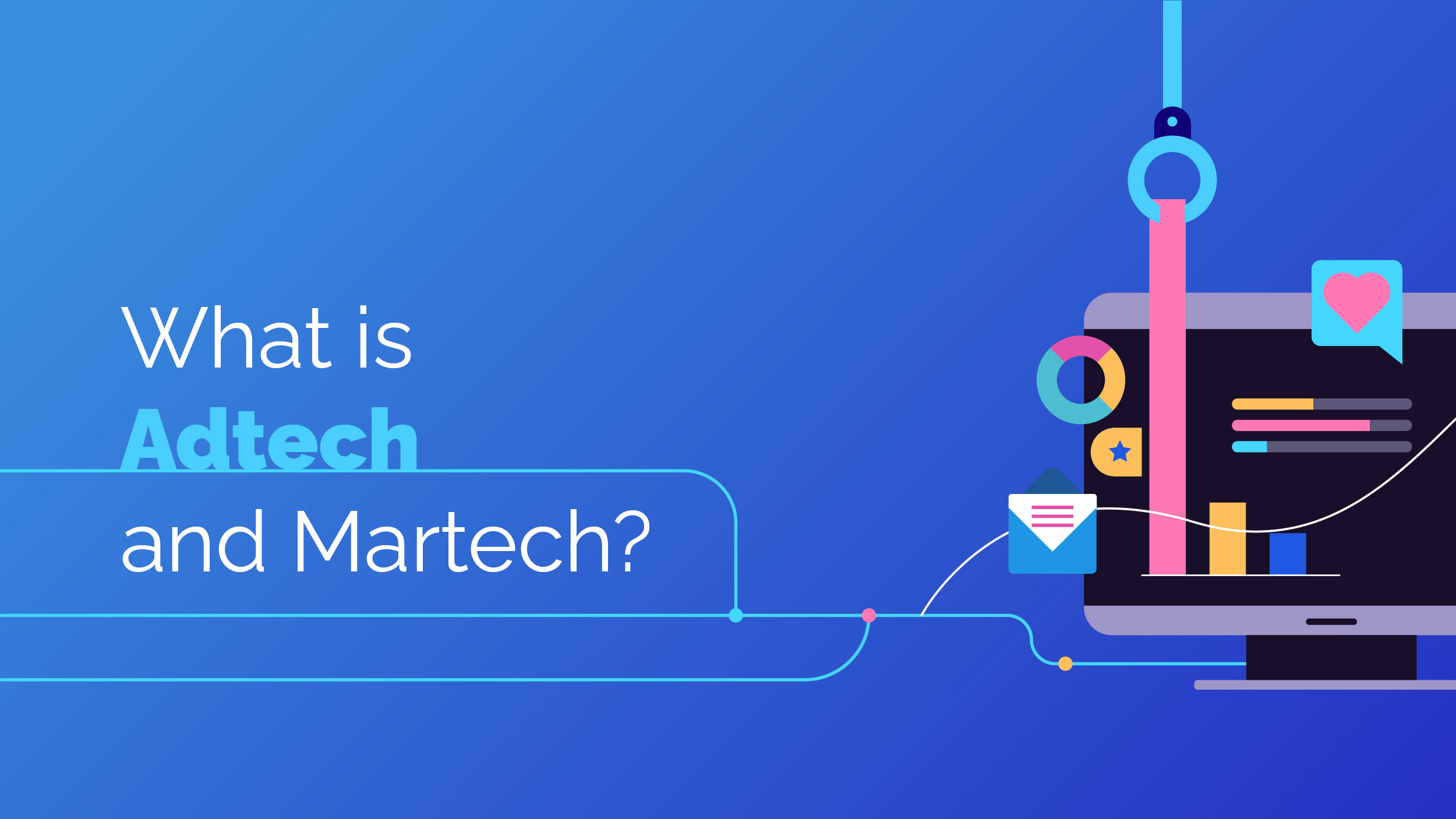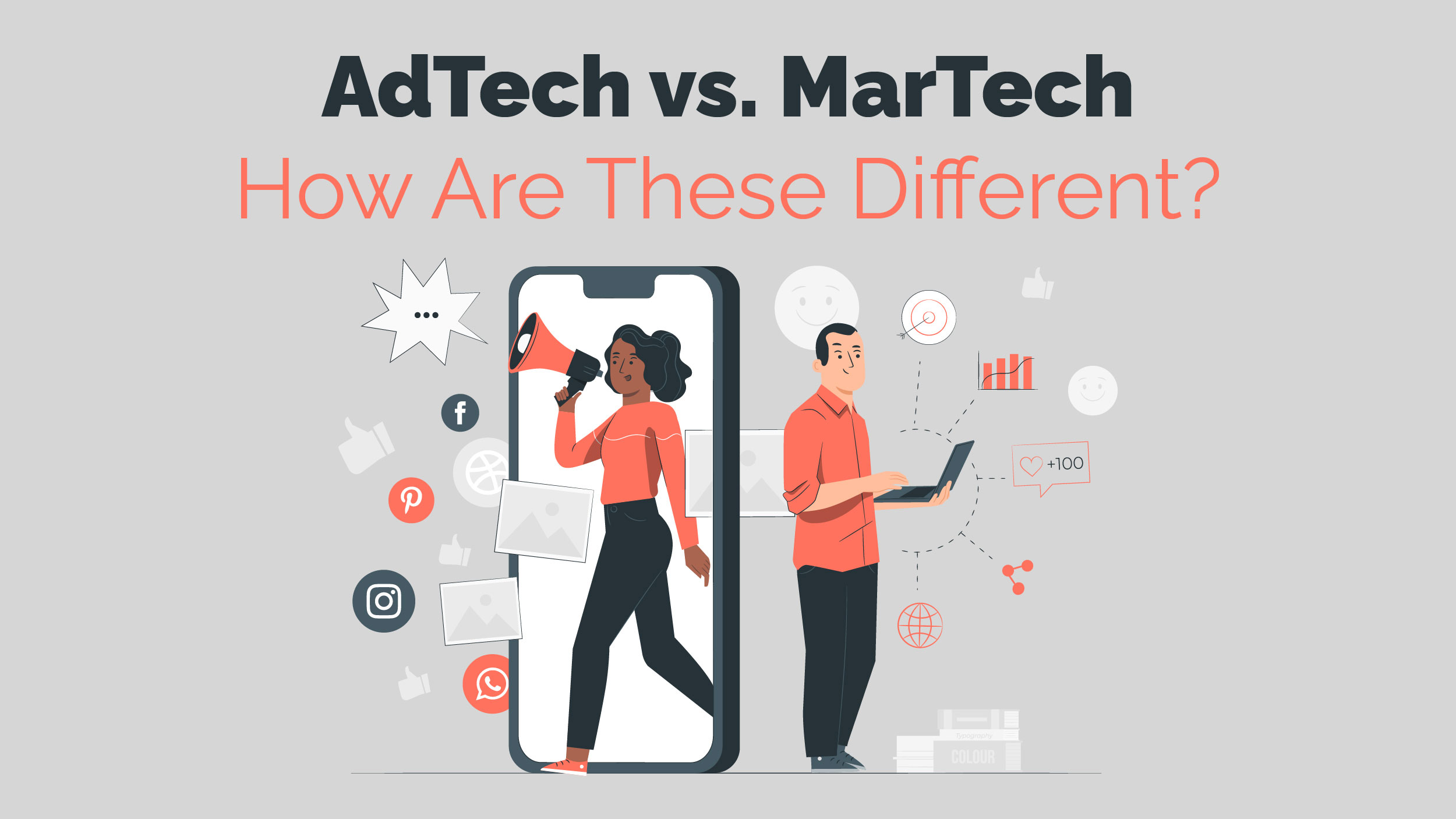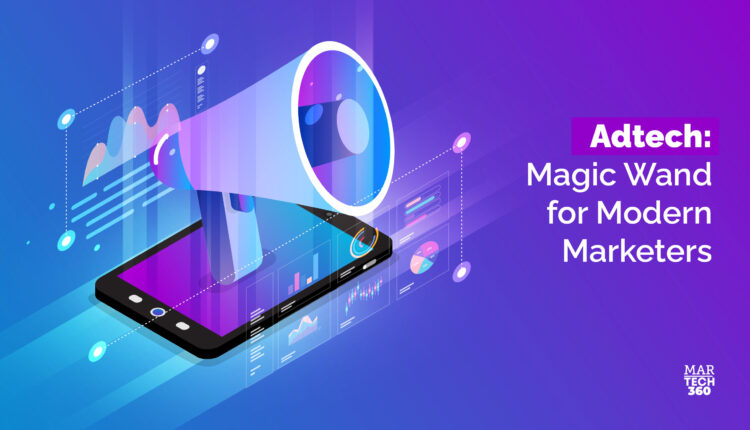Picture this: you, a small business owner, aiming to boost your online presence and customer base. Terms like programmatic ads, data platforms, and CRM software baffle you, but you’re not alone!
It doesn’t take long for you to come across the phrases “AdTech” and “MarTech” in the realm of digital marketing.
These terms describe the numerous kinds of technologies that are employed to support a brand’s success in the online world.
You’ve probably seen adtech and martech used synonymously, albeit this is wrong.
They are different from one another even though they have certain similarities. Since technology has advanced so much in recent years, it is difficult to draw a line between adtech and martech.
In order to gain a thorough understanding of the differences between martech and adtech, it’s important to go beneath the surface and grasp the essence of their respective functions and contributions.
With that said, let’s delve into the subject with an overview of what you can expect to discover:
What is Adtech and Martech?
 Firstly, let’s begin by discussing the precise definition of adtech.
Firstly, let’s begin by discussing the precise definition of adtech.
The technology used in advertising is referred to as “adtech.” It covers a variety of tools and software that might be useful for advertisers, publishers, and ad agencies in planning, strategizing, and managing all aspects of digital advertising or monetization. Due to its ability to target specific demographics, adtech helps businesses cut unnecessary advertising spending.
As reported by Axios, the world’s five largest technology companies possess a combined 53% share of global advertising revenues. Additionally, a mere 25 companies contribute to nearly 75% of the total global ad expenditure. Numerous adtech companies such as Meta, Amazon, and Google are anticipated to maintain a firm hold on the industry’s landscape.
Marvels of Adtech’s Platforms/Tools Landscape
The Demand Side Platform (DSP) and the Supply Side Platform (SSP) are the two principal entities that are extremely important to adtech.
- Demand-side Platform (DSP): It is a crucial tool for advertisers to purchase, explore, and showcase video or mobile advertisements. It empowers advertisers to acquire ad spaces in real-time across publisher websites accessible through ad exchanges and networks. Several notable DSP participants include Smarty Ads, App Nexus, Simplifi, and Trade Desk, among others.
- Supply Side Platform (SSP): This platform facilitates publishers in real-time selling of display and mobile ad impressions to potential purchasers. MoPub, OpenX, Google, App Nexus, and other prominent SSP participants play a significant role in this landscape.
Other tools and platforms that come under adtech are:
- Programmatic advertising tools
- Ad exchanges/network/servers
- Data management platforms
- Tag management systems
- SEM (Search Engine Manager)
Now that we have familiarized ourselves with adtech, let’s dive into the domain of martech.
Therefore, the first question that comes to mind is, “What exactly is martech?” Martech is another name for marketing technology, which is primarily utilized in digital marketing. It describes the platforms and tools you employ to produce your advertising media content, gather and analyze data, and connect with your target market.
Martech is most commonly known for its automation, which enables a user to manage multiple channels concurrently and save time. In addition, it also helps marketers get more customer information and resolve tasks efficiently, which makes digital marketing more cost-effective.
Wonders of Martech’s Platforms/Tools Landscape
The following are a few of the most commonly used martech tools and platforms:
- Customer Relationship Management (CRM) software – Hubspot and Salesforce
- Social media management – Buffer and Hootsuite
- Content management platforms – Squarespace, and WordPress
- Digital analytics tools- KISSmetrics, and MixPanel
- Email marketing tools– MailChimp, and Magento
- Search engine optimization (SEO) tools– WooRank, Google Analytics, and Ahrefs
The term “Martech stack” refers to a group of marketing technology tools used by a business to reach and convert potential clients.
AdTech vs. MarTech: How Are These Different?
 Due to their close ties, adtech and martech frequently cause confusion in the public. The disparities between the two, nevertheless, are clear and significant.
Due to their close ties, adtech and martech frequently cause confusion in the public. The disparities between the two, nevertheless, are clear and significant.
Both of them work differently within a company’s digital marketing strategy and have their own platforms.
Knowing this difference can help you allocate the required funds and resources to the correct departments, execute the relevant campaigns on the most suitable platforms, and drive your growth.
Let’s now explore some of their specific differences in more detail.
1. Functions They Serve
The goal of adtech is to produce an enhanced and more targeted advertising strategy.
With the numerous ad tech tools at your disposal, you can better determine the platforms and strategies you should use while collecting data from each campaign, enabling you to make sure your paid advertisements are reaching your target audience.
Martech, meanwhile, is more concerned with generating and leveraging leads, enhancing conversions, and fostering client relationships.
It consists of earned media, personalized content, and social media marketing.
2. Category of Media
Paid media, or “adtech”, includes the following:
- PPC
- Display Ads
- Promoted Social Media Posts
Unpaid media is what martech refers to and can include:
- Email Marketing
- Organic Search
- Social Media Posts
3. Platforms Used
There are numerous platforms associated with online marketing and advertising. These platforms are created to facilitate particular tasks, and a majority of them are exclusive to their respective fields.
You can frequently tell whether a platform is intended for adtech or martech by looking at its features.
To illustrate, while martech platforms center around the customer relationship aspect — from drawing them in to comprehending their needs — adtech platforms direct their attention to the demand side. This involves executing advertising campaigns or procuring advertisement inventory for subsequent sales.
4. Target Audience
Martech is used to maintain a relationship with a prospect once one has been established. Therefore, martech is used when there has already been some sort of engagement between the customer and the brand.
Data about the potential customer has been gathered at some stage, including name, email, and other identifying details like past purchases.
Unlike what may be supplied with adtech, this data enables one-to-one communication that is more personal.
But with adtech, it’s more of a one-to-many strategy that is used.
Adtech solutions come into play when exposing the brand to potential customers i.e. for brand awareness, as the brand is typically not yet recognized and may even be completely unknown to the consumer
Some adtech analytics tools can prove helpful in this situation by assisting you in determining the strengths and weaknesses of your advertising campaign.
Only a few analytics can be measured, such as clickthrough rates and viewing counts.
5. Billing Model
Martech solutions are often provided via the cloud and are paid for based on a fixed monthly subscription charge.
As a result, your marketing budget can easily and predictably support these solutions, which are frequently SaaS (Software as a Service).
Martech businesses also frequently provide their products or services directly to marketers.
Adtech options, however, are subject to change from one billing cycle to the next.
Despite the fact that they may be based on a fixed price, they frequently use measures like CPM. Advertising firms occasionally charge a commission in addition to the normal CPM ad cost.
Compared to martech businesses, adtech companies typically target media and advertising agencies when marketing their products.
Wrapping Up
Adtech and martech have very unique advantages and disadvantages when used separately, but they can also be utilized together to achieve even greater advantages.
Combining your adtech and martech efforts might help you see the wider picture when it comes to your target demographic and overall digital marketing strategy when you’re seeking to grow your company.
The ability to seamlessly integrate these two digital technologies will soon be the holy grail of marketing and advertising, giving firms the ability to predict what customers want and need before they even have the chance to realize it for themselves.


Comments are closed.